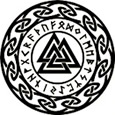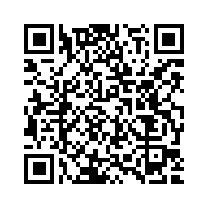
Author : Carlson Stephen C.
Title : The gospel hoax Morton Smith’s Invention of Secret Mark
Year : 2005
Link download : Carlson_Stephen_C_-_The_gospel_hoax.zip
During his visit to the library of the Mar Saba monastery in 1958, did Morton Smith happen upon a reference to a previously unknown version of the Gospel of Mark in a previously unknown letter of the important early church figure, Clement of Alexandria, or did Smith himself create this text, thereby producing one of the most sensational scholarly hoaxes of modern times? In the decades since Smith first made the purported letter of Clement public, with its tantalizing and provocative excerpts of a putative secret version of the Gospel of Mark, there have been occasional and unresolved controversies about its genuineness, and, consequently, in scholarly circles there has been a widespread uncertainty about what to make of the text. On the other hand, understandably reluctant to think that a scholar of Smith’s standing would have stooped to such a hoax, and irresistibly drawn by the whiff of esoteric Christian practices and suppressed versions of the Gospel of Mark, some scholars have adopted the text as a trustworthy source to use in historical reconstructions of early Christianity. For these scholars especially, the stakes involved in questions about the alleged letter of Clement and “secret Mark” are high. But for everyone concerned about making use of any bona fide source for the study of Christian origins, the questions about secret Mark have large consequences, and elicit eager interest. Moreover, beyond scholarly circles secret Mark has found a strong popular interest as well. This is perhaps partly because ours is a time of enormous popular curiosity about early Christian diversity, great sympathy for allegedly suppressed versions of ancient Christianity, and a touching readiness among the general public to accept various claims that scholarly and ecclesiastical intrigues have combined to cover up some early Christian teachings, texts and practices. In this atmosphere, it seems to require surprisingly little to generate a very receptive popular attitude toward a text like secret Mark. But is secret Mark a suppressed and long-forgotten gospel text, or is it a phantom-text, conjured by a particularly clever hoaxer to play to certain types of wishful thinking? Stephen Carlson’s study of the purported letter of Clement is small in size but packs a powerful punch. Others have raised questions about the text, and several scholars have lodged astute observations that suggest that it is a fake. But Carlson presents by far the most thorough investigation to date. Indeed, it is difficult to think of anything that he has left unexamined. He judiciously weighs all the observations and arguments of previous scholars for and against the authenticity of the text, and this in itself would make his discussion a valuable contribution. But, in addition, Carlson deploys a further battery of original observations, among which his analysis of the properties of the handwriting of the text opens up a whole new line of discussion. Drawing upon the forensic science involved in forgery-detection, Carlson gives what seems to me convincing evidence that this purported letter of Clement was penned by someone trying to pass it off as an eighteenth-century manuscript. Furthermore, combining impressively thorough investigation of all the relevant historical issues with his training as a lawyer, Carlson marshals a powerful case that the most likely person who perpetrated the hoax is the internationally celebrated scholar of ancient Judaism and Christianity, Morton Smith, who presented this letter of Clement as a discovery made while cataloguing books in the Mar Saba library. Carlson argues that Smith uniquely had the abilities, the opportunity, and the motives. I suspect that for most scholars, Carlson’s rather wellresearched and powerful case that Smith created this letter of Clement will comprise the really worrying matter. The charge that Smith fabricated the letter of Clement and that the putative excerpts from a secret Mark are phoney is not just academic tittle-tattle; it is genuinely disturbing. Some scholars (myself included) have suspected that the letter may be a fake, or have allowed for this possibility, but have been very reluctant to think that a respected member of the scholarly guild (even such a colorful character as Smith was) would bend his considerable abilities to fabricating a text and put it forth as genuine. Scholarship depends, to a greater degree than we sometimes realize, on trust, scholars abiding by self-imposed rules of the game. And the game is not supposed to involve such trickery. Indeed, for some scholars, this reluctance to think that Smith would do such a thing appears to be the major reason for treating the Clementine letter as genuine. So, if Carlson is right (and, so far as I can tell, he has presented a rather compelling phalanx of argumentation), then the case of secret Mark raises uncomfortable questions about the integrity of our scholarly culture. On the other hand, Smith was an unusually clever and impressively well-prepared scholar, so maybe we need not fear many other hoaxes so well crafted! However, for scholars particularly, the more substantial question by far is whether the Clementine letter is genuine or a fake. Can this text be used as a valuable second-century primary source for historical investigation of early Christianity and the transmission-history of the Gospel of Mark, or is the letter really only a modern curiosity, an artefact of learned sleight-of-hand, an especially clever practical joke played upon scholars in the field, and therefore worthless for the study of Christian origins? Of course, any suggestion of fakery justifiably raises the question about who might have prepared such an impressively deceptive text, and Carlson rises to this demand. But I want to emphasize that for the study of early Christianity the key matter is whether the Clementine letter is genuine. My judgment is that Carlson’s case against the authenticity of the text is persuasive, decisive, practically unanswerable. Certainly, anyone who now wishes to treat the Clementine letter as a valid second-century text will first have to try to refute Carlson’s case in at least an equally detailed and thorough manner. Carlson has now made it impossible to give secret Mark the benefit of doubt, or to sit on the fence and avoid the issue. Carlson offers the results of a meticulous and amazingly wide-ranging investigation of sources, a detailed and creative analysis involving wholly new matters not previously addressed (such as study of the handwriting of the Clementine letter), and fascinating proposals that Smith himself embedded the text and his references to it with clever clues that it is a hoax. Also, helpfully pointing out the distinctions between a forgery (usually done for financial gain) and a hoax (usually intended more to demonstrate the cleverness of the hoaxer), Carlson emphasizes that the purported letter of Clement should be judged a particularly clever and spectacularly successful instance of a scholarly hoax. As the case for any scholarly claim, Carlson’s study will now be subjected to the judgment of other scholars concerned with historical investigation of early Christianity. But to give his case an adequate assessment will require a commitment to thoroughness and clear thinking equivalent to what Carlson demonstrates. I think I can safely estimate where fair-minded scholarship will come down in the end, recognizing Carlson’s diligent and cogent exposure of Smith’s letter of Clement and its references to a secret Mark as an impressive fake. But if the text is more appropriately placed in the curio cabinet than on the shelf of primary texts of early Christianity, we can at least be grateful that the matter appears now rather clearly settled. It will be disappointing to some, and others will say “I told you so.” But the more important matter is that we can now get on with the very real demands of engaging the remaining genuine early Christian sources. And, I suggest, we should also probably allow ourselves a belated congratulatory laugh, with Morton Smith, over this ingenious fabrication that drew so much interest and for so long defied our best efforts to satisfy ourselves whether it was real or a hoax. Larry W. Hurtado. ...

Davis James Kirkpatrick - Spying on America
Author : Davis James Kirkpatrick Title : Spying on America The FBI's domestic counter-intelligence...














